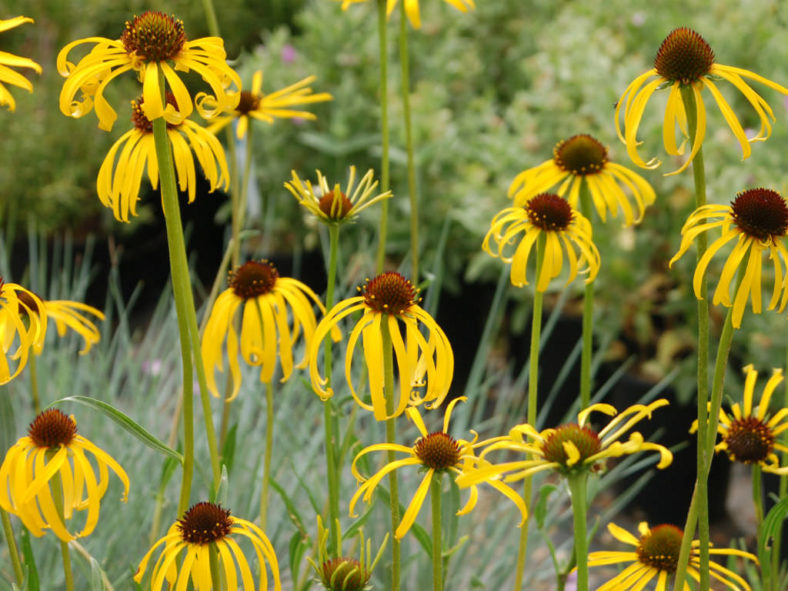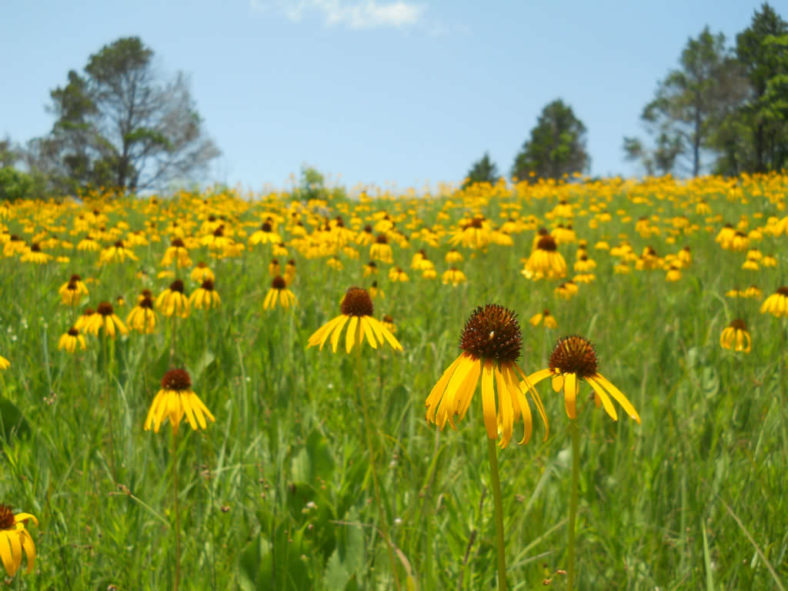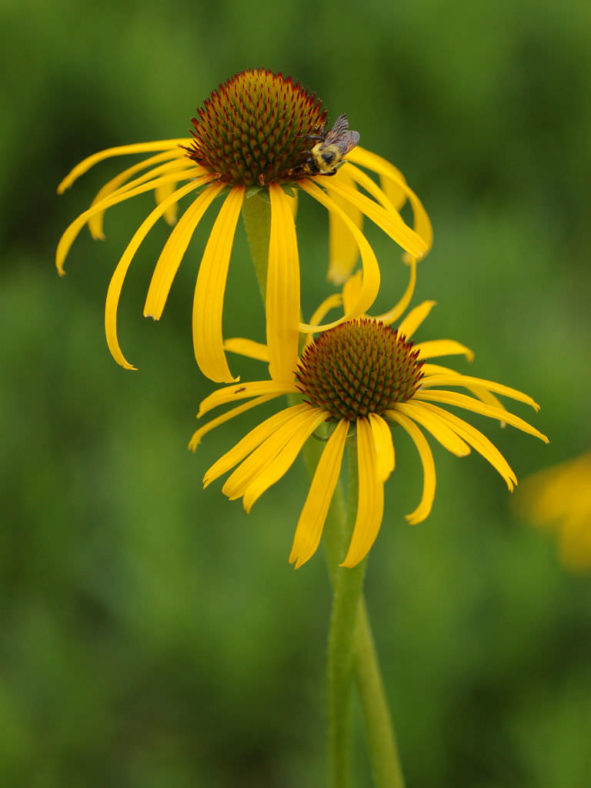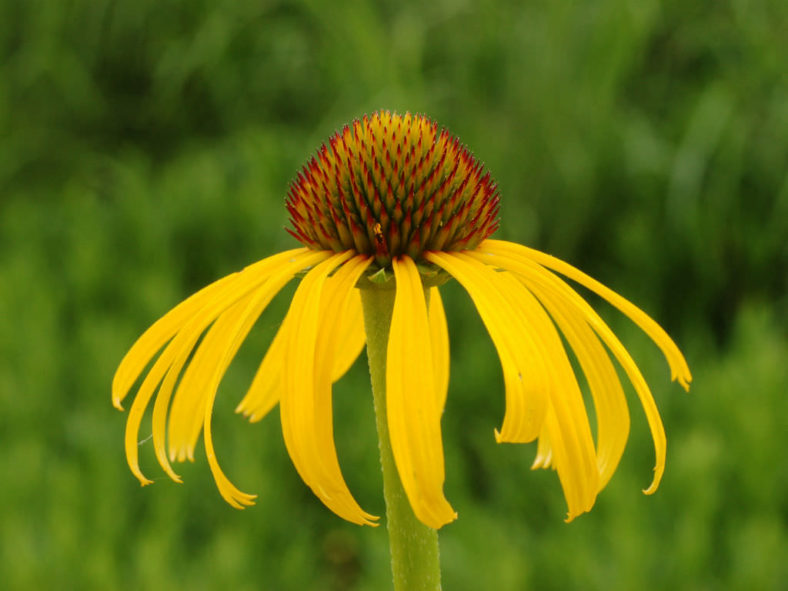Scientific Name
Echinacea paradoxa (Norton) Britton
Common Name(s)
Yellow Coneflower, Bush's Purple Coneflower
Synonym(s)
Brauneria paradoxa, Echinacea paradoxa var. paradoxa, Echinacea atrorubens var. paradoxa
Scientific Classification
Family: Asteraceae
Tribe: Heliantheae
Genus: Echinacea
Origin
Echinacea paradoxa is native to southern Missouri, Arkansas, and south-central Oklahoma, with one isolated population reported from Montgomery County in eastern Texas.
Flower
Color: Yellow to orange-yellow
Bloom Time: Summer
Description
Echinacea paradoxa is an herbaceous perennial with narrow, up to 8 inches (20 cm) long leaves. It features large, daisy-like flowers with drooping yellow to orange-yellow petals (ray flowers) and very large, coppery-brown to chocolate-brown central cones. The best flower display is from mid-June to mid-July, sometimes with sporadic continued bloom throughout the summer. Flowers grow on rigid, glabrous stems typically up to 3 feet (90 cm) tall.

Hardiness
USDA hardiness zone 5a to 9b: from −20 °F (−28.9 °C) to 30 °F (−1.1 °C).
How to Grow and Care
Coneflowers are often listed as drought tolerant, but they will do much better with regular water. I leave the plants standing through winter to feed the birds. Shearing them back in the spring will result in bushier plants that bloom longer into the season. Deadheading is the primary maintenance required with Coneflowers. They are prolific bloomers, and keeping them deadheaded will keep them in bloom all summer. Luckily each flower remains in bloom for several weeks. Flowers start blooming from the top of the stem. As the initial flower fades, more side shoots and buds will form along the stem. Keep the plants deadheaded, and you'll keep getting more flowers.
If you don't want to start your own seeds, plenty of varieties are available for purchase as plants, especially through mail order. Plants can also be divided or grown from stem cuttings. Coneflower can be planted in either spring or fall. Be sure to allow for good air circulation to prevent fungal diseases.
See more at How to Grow and Care for Coneflower.
Links
- Back to genus Echinacea
- Plantpedia: Browse flowering plants by Scientific Name, Common Name, Genus, Family, USDA Hardiness Zone, or Origin
Photo Gallery
Click on a photo to see a larger version.




